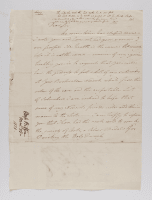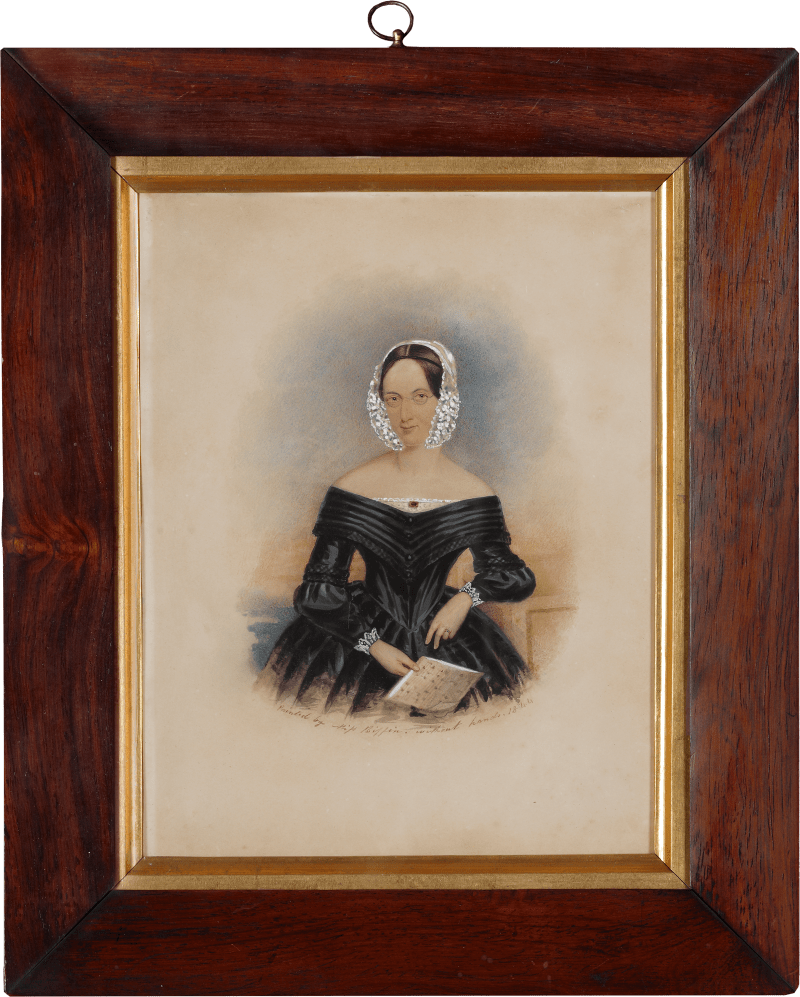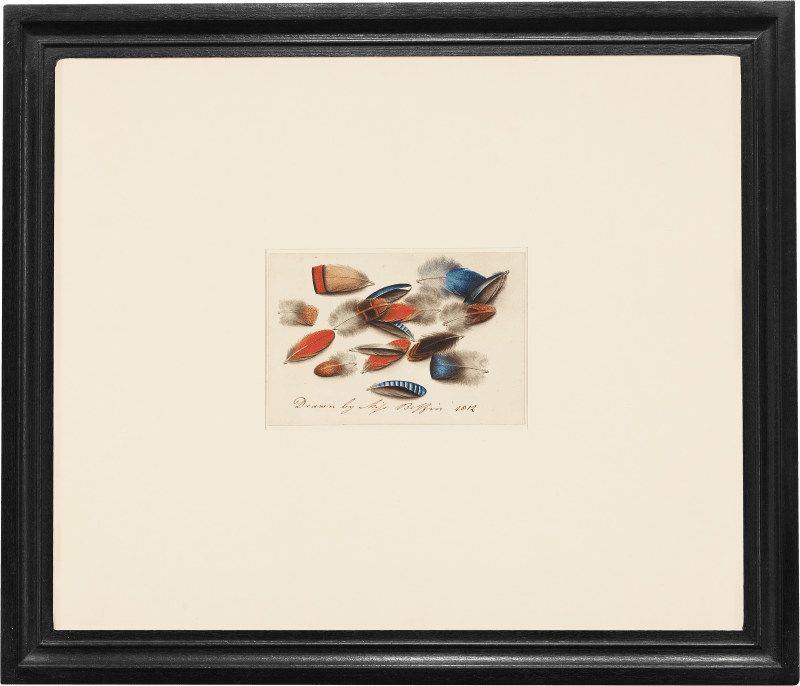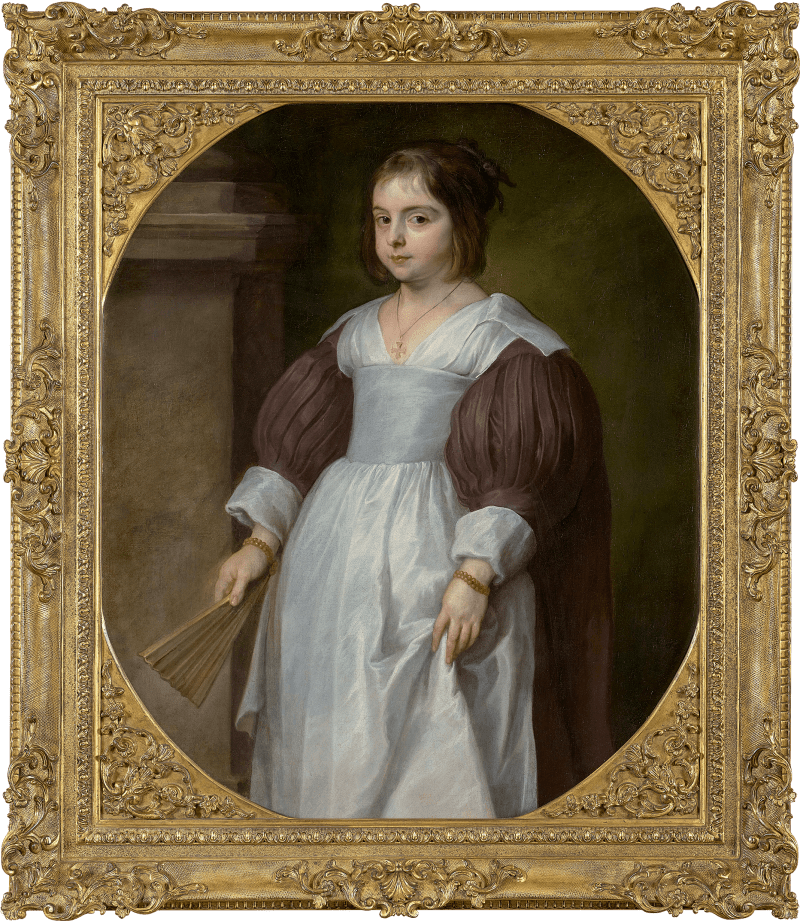The recipient of this letter, William Stevenson, was gifted Sarah Biffin’s earliest known self-portrait by the artist in 1812. This letter provided crucial information which helped to confirm the provenance and date of Biffin’s earliest self-portrait and offers valuable insight into Biffin’s early professional career as an artist. This letter was written the same year that Biffin acquired a studio in London, published her short memoir, exhibited four works of art at the Royal Academy, and began her truly independent career.
Biffin was born into a farming family in Somerset in 1784, and her baptism records show that she was ‘born without arms and legs’. She began her career in 1804, at twenty years old, when a man named Mr. Dukes offered her employment as part of a travelling act: ‘it was suggested to my Parents that a comfortable living might be obtained by Public Exhibition, and an engagement was arranged for that purpose.’[1] Biffin left her family home to...
The recipient of this letter, William Stevenson, was gifted Sarah Biffin’s earliest known self-portrait by the artist in 1812. This letter provided crucial information which helped to confirm the provenance and date of Biffin’s earliest self-portrait and offers valuable insight into Biffin’s early professional career as an artist. This letter was written the same year that Biffin acquired a studio in London, published her short memoir, exhibited four works of art at the Royal Academy, and began her truly independent career.
Biffin was born into a farming family in Somerset in 1784, and her baptism records show that she was ‘born without arms and legs’. She began her career in 1804, at twenty years old, when a man named Mr. Dukes offered her employment as part of a travelling act: ‘it was suggested to my Parents that a comfortable living might be obtained by Public Exhibition, and an engagement was arranged for that purpose.’[1] Biffin left her family home to travel across the country with Dukes; she signed a contract with her new employer and began a tirelessly itinerant lifestyle, exhibiting at fairs in regional towns and cities across the length and breadth of Britain where she would sew, write and paint in front of paying crowds. Under these conditions, Biffin began to forge a career as a professional artist and portrait miniaturist.
Biffin corresponded with William Stevenson whilst exhibiting with Dukes. On 12 June 1811, she wrote to him;
‘I feel a particular pleasure in having an opportunity of returning thanks for the very polite and friendly treatment I have received from you, and your family, since I have had the honor of being acquainted with you, as also for the confidence you have so obviously shewn by allowing me to take two such valuable pictures from your collection; I have been much interupted or I should have sent them back by this time, but must be a little more time to finish this one you lent me last.’
Biffin’s letters to Stevenson not only reveal her determination to advance her training by copying other artists’ work, but also provide insight into her demanding and busy life while touring. Almost a year after the above-mentioned letter, Biffin wrote to Stevenson again, on 22 April 1812;
‘I hope I have not incured your displeasure by keeping the two miniatures so long, but I can asure you every thing appear to conspire against me, to prevent me from indulging myself by coppying them; but as you was so good as not to limit me in the practice of so good a coppy I flatered myself you would forgive such an intrusion … ‘I cannot be thankful enough for your extreme goodness and as a trifling acknowledgement I have painted my own miniature (however good the likeness may be rested with you to determine)
The above extract offers insight into the relationship between Biffin and her clients and confirms the gift of her first known self-portrait to Stevenson in 1812.
The present letter, penned to Stevenson on 24 March 1821, was written the same year as Biffin’s triumphant rise to fame as an independent artist. In 1821, she acquired a studio in London, exhibited four works at the Royal Academy of Arts, was awarded a silver medal by the Society of Arts, and published her own short biography – which relates to the present letter. In the letter, Biffin states;
Occasion of my again troubling you is to request that you will have the goodness to post a list of my subscribers at your Booksellers, Norwich. which from the nature of the case and the respectable list of subscribers I am inclined to hope that some of my Norwich friends will add their names to the list.
The subscriber’s list she mentions relates to the short biography she circulated in 1821, entitled An Interesting Narrative and Proposals for a Print of Miss Biffin. In the biography, she openly revealed that:
The object is to raise a sum to enable me to make a purchase of some real property, which would afford me a certain income when my immediate means of support are diminished…[2]
This candid objective places Biffin at the forefront of women’s independence at a time when self-promotion was perceived as profoundly unfeminine, and property ownership was unusual for women. Astutely communicating with her social connections, this letter evidences Biffin’s unwavering commitment to promoting her own work and talent.
[1] Sarah Biffin, ‘An Interesting Narrative and proposals for a print of Miss Beffin to be dedicated, by permission to HRH the Princess Augusta’, p.1, 942 BIF/10, Liverpool Record Office, Liverpool.
[2] Sarah Biffin, ‘An Interesting Narrative and proposals for a print of Miss Beffin to be dedicated, by permission to H.R.H the Princess Augusta’, 942 BIF/10, Liverpool Record Office, Liverpool.













